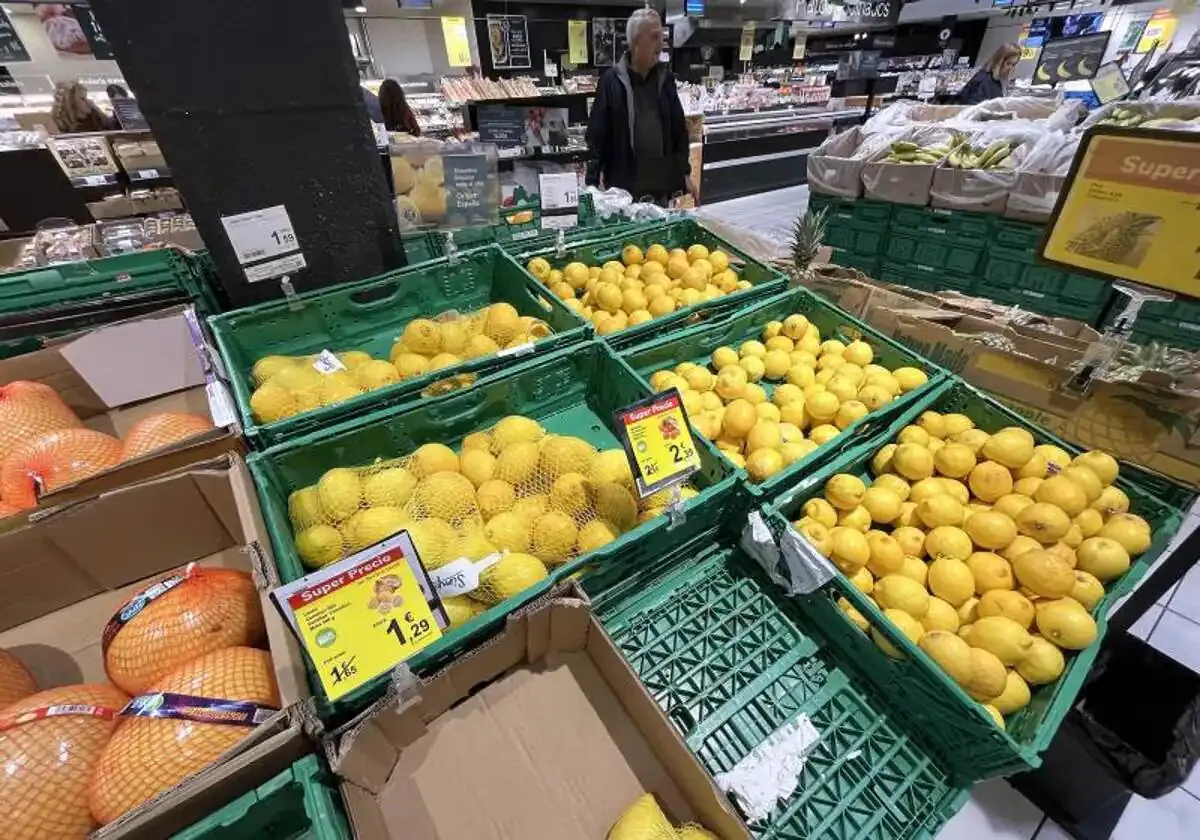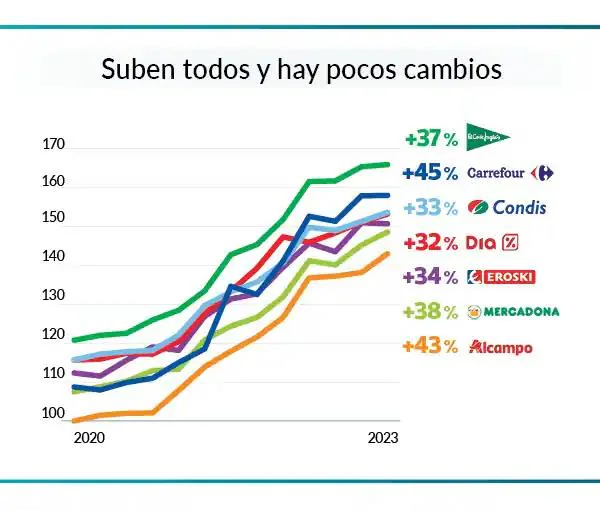

Sections
Highlight

Filling the shopping trolley in Spain is 38% more expensive now than it was three years ago, according to new research.
Despite measures adopted by the national government on 1 January 2023 and extended until 30 June 2024 to eliminate or reduce IVA - Spain's sales tax - on basic foods, prices in supermarkets have continued to rise.
Spain's OCU organisation of consumers and users looked at the prices of 122 common products (fresh food, private labels and manufacturer brands) over the past three years (between December 2020 and December 2023) in seven major supermarket chains: Alcampo, Carrefour, Condis, Dia, El Corte Inglés, Eroski and Mercadona.
The OCU found the prices for all products had increased except for four, which recorded decreases, albeit insignificant ones. The OCU estimated that, on average, the increases have been 38%, a figure close to that calculated by Spain INE national statistics institute, which sets the CPI for food products at 30% for this period. This means that if three years ago you paid 100 euros for groceries, now, for the same shopping basket of goods, you pay close to 140 euros.
All the supermarket chains included in OCU's analysis recorded increases in food prices of between 32% and 45%, although the biggest increases occurred in Alcampo and Carrefour. In cash terms, as the OCU pointed out, what cost 248 euros three years ago in Alcampo now costs 355 euros, 100 euros more. In Carrefour, the increase is 122 euros more.
However, the Spanish consumer organisation pointed out that cheap supermarkets are still cheap and expensive supermarkets are still expensive, with one exception. According to the OCU, Carrefour has gone from being one of the cheapest supermarkets to being the second most expensive, behind only El Corte Inglés.

The OCU is not clear about what has caused these price increases. What is clear however, is that the prices at the points of sale can be up to six times higher than the prices received by farmers and livestock breeders.
The increase starts with the prices charged by producers, according to the OCU, although it also makes it clear that this does not imply they are making more profit, as there are factors that can justify the increase, such as the rise in the cost of fertilisers or fuel.
To clarify this, the OCU compared the prices of 13 fresh products at source with the retail prices in supermarkets. The study confirmed that five products have risen much more in percentage at origin than in the supermarket: tomatoes, potatoes, onions, chicken and eggs; six foods have risen by the same percentage at origin and destination: lettuce, beef, pork belly, oranges, carrots and rabbit; and two have risen considerably more in the store than at origin: apples and bananas.
The OCU focused on the percentage increases that supermarkets make and that can benefit them. As an example, if the farmer raises a basic food to €1.10/kg which he used to sell for €1/kg, the distributor could raise the same amount of money to earn the same as before. On the other hand, if a percentage increase of 10% is applied to the retail price of €3/kg, the consumer will pay €3.30/kg, so that the distributor's margin increases by 20 cents.
Publicidad
Publicidad
Publicidad
Publicidad
Esta funcionalidad es exclusiva para registrados.
Reporta un error en esta noticia

Debido a un error no hemos podido dar de alta tu suscripción.
Por favor, ponte en contacto con Atención al Cliente.

¡Bienvenido a SURINENGLISH!

Tu suscripción con Google se ha realizado correctamente, pero ya tenías otra suscripción activa en SURINENGLISH.
Déjanos tus datos y nos pondremos en contacto contigo para analizar tu caso

¡Tu suscripción con Google se ha realizado correctamente!
La compra se ha asociado al siguiente email
Comentar es una ventaja exclusiva para registrados
¿Ya eres registrado?
Inicia sesiónNecesitas ser suscriptor para poder votar.